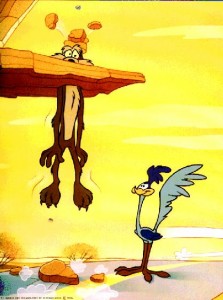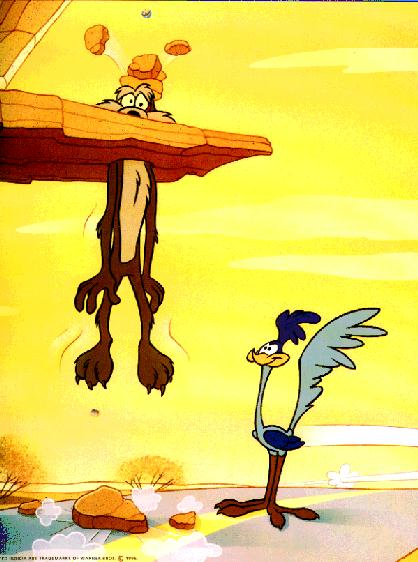 Here’s a conclusion that may surprise you about as much as one of the anvils that Jerry the mouse manages to drop on Tom the cat’s head from time to time: Kids don’t miss violence when it doesn’t appear in their favorite cartoons; what they’re really looking for is action.
Here’s a conclusion that may surprise you about as much as one of the anvils that Jerry the mouse manages to drop on Tom the cat’s head from time to time: Kids don’t miss violence when it doesn’t appear in their favorite cartoons; what they’re really looking for is action.
That’s the verdict of a study by professors at four universities whose finding’s have been published in the journal Media Psychology.
Assistant Telecommunications Professor Andrew J. Weaver of Indiana University and his colleagues were testing the reason that producers and programmers often give for including violence in kid’s cartoons — that children want to see it.
"Violence isn't the attractive component in these cartoons which producers seem to think it is,” Weaver said. “It's more other things that are often associated with the violence. It's possible to have those other components, such as action specifically, in non-violent ways. ... You don't have to cram violence into these cartoons to get kids to like them. They'll like them without the violence, just as much if not more.”
Long a staple of Saturday morning programming, violent cartoons are now more readily available on cable television channels specializing in kids’ programs, as well as on the Internet. According to a press release from Indiana University, some content analyses have found that as many as 70 percent of children's television shows have violent content.
Researchers at North Carolina State University, Purdue University and the University of Illinois were among Weaver’s co-authors.
"For many producers and media critics, the question is not if children love violence, but rather why children love violence," the team wrote. "Our goal in this study was to examine children's liking of violent content while independently manipulating the amount of action, which is often confounded with violence in the existing research."
From the Indiana University press release:
"The researchers used a sample group of 128 school children, ranging in age from five to 11 and from kindergarten to the fourth grade. There were a nearly equal number of boys and girls. Research assistants showed each child one of four versions of a five-minute animated short created for the study and then led them through a questionnaire. The short was designed to resemble familiar slapstick cartoons. Four different versions of the cartoon were used. Six violent scenes were added to one version, which was carried out by both characters and in response to earlier aggression. Nine action scenes were added to another version. Two other versions had lower amounts of action or violence."
View a version of the cartoon, in which a character named Eggle tries to steal a painting from a character named Orangehead, here.
Weaver, the father of two young sons, said he was particularly surprised to learn that violent content had an indirectly negative effect on whether boys enjoyed a program.
"There is a lot of talk about boys being more violent and more aggressive, for whatever reason, social or biological, and yet we found that they identified with the characters more when they were non-violent,” he said. “They liked the characters more and they enjoyed the overall cartoon more.”
On the other hand, violence didn’t change the way girls identified with the characters nearly as much.
"They're not going to identify with what they perceive to be male characters, whether they are violent or not," Weaver said. "They didn't prefer the more violent programming. They were just using other cues besides the character's violent or non-violent behavior to determine how much they enjoyed the show."
While Weaver says more research is needed, including a closer look at how girls respond to violence in cartoons, he notes that the study published in Media Psychology offers some hints on how cartoons can incorporate action without violence.
"Alternatives could be things related to speed -- characters going fast, moving quickly. It was one way that we manipulated action in this study," he said. "If you can increase action without increasing violence, which clearly is possible as we did it in this study, then you can increase the enjoyment without potential harmful effects that violence can bring.
"This is good news. If producers are willing to work on making cartoons that aren't violent so much as action packed, they can still capture their target audience better . . . and without the harmful consequences."
